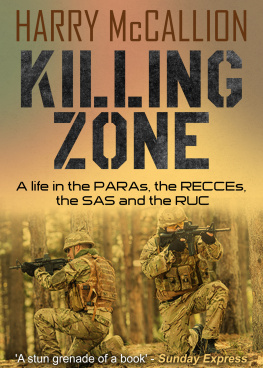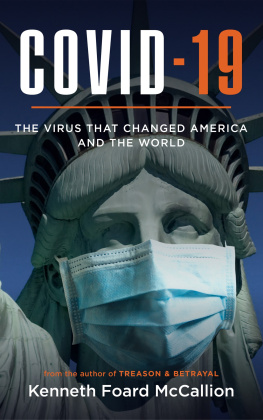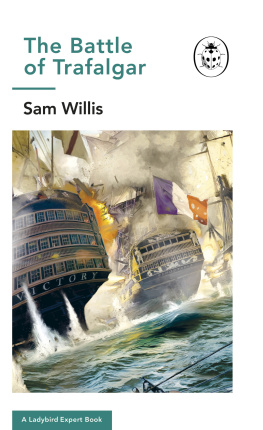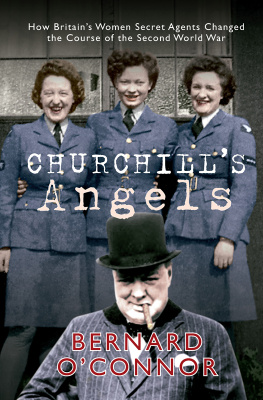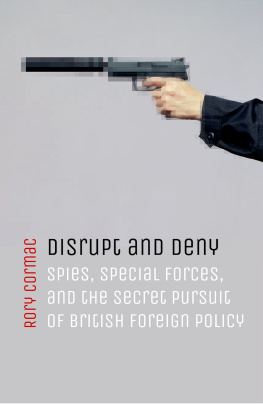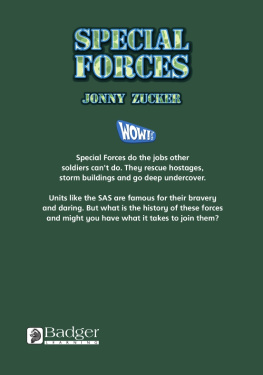


Published by John Blake Publishing,
an imprint of Bonnier Books UK
8081 Wimple Street
London
W1G 9RE
www.facebook.com/johnblakebooks 
twitter.com/jblakebooks 
First published in paperback in 2020
Paperback: 978 1 78946 285 2
Ebook: 978 1 78946 334 7
All rights reserved. No part of this publication may be reproduced, stored in a retrieval system, or transmitted in any form or by any means, without the prior permission in writing of the publisher, nor be otherwise circulated in any form of binding or cover other than that in which it is published and without a similar condition including this condition being imposed on the subsequent purchaser.
British Library Cataloguing-in-Publication Data:
A catalogue record for this book is available from the British Library.
Cover design by www.envydesign.co.uk
Text copyright Harry McCallion 2020
The right of Harry McCallion to be identified as the author of this work has been asserted by him in accordance with the Copyright, Designs and Patents Act 1988.
Every reasonable effort has been made to trace copyright-holders of material reproduced in this book, but if any have been inadvertently overlooked the publishers would be glad to hear from them.
John Blake Publishing is an imprint of Bonnier Books UK
www.bonnierbooks.co.uk
This book is dedicated to the memory of
Sergeant Paul Oram MM
and Sergeant Alistair Slater MM
Two warriors who made the ultimate sacrifice for their regiments, their country, and peace in Northern Ireland
CONTENTS
ASU | Active Service Unit |
CESA | Catholic Ex-Servicemens Association |
CIA | Central Intelligence Agency |
CIRA | Continuity Irish Republican Army |
CQB | Close Quarter Battle |
DCM | Distinguished Conduct Medal |
DPP | Director of Public Prosecutions |
DSO | Distinguished Service Order |
DUP | Democratic Unionist Party |
FBI | Federal Bureau of Investigation |
FRU | Force Research Unit |
GC | George Cross |
GFA | Good Friday Agreement |
HMSU | Headquarters Mobile Support Unit |
INLA | Irish National Liberation Army |
IPLO | Irish Peoples Liberation Organisation |
IRA | Irish Republican Army |
KOSB | Kings Own Scottish Borderers |
MLA | Member of the (Northern Ireland) Legislative Assembly |
MLO | Military Intelligence Liaison Officer |
MM | Military Medal |
MoD | Ministry of Defence |
MP | Military Police |
MRF | Military Reaction Force |
NCO | non-commissioned officer |
NILA | Northern Ireland Legislative Assembly |
NIRA | New Irish Republican Army |
NITAT (NI) | Northern Ireland Training and Advisory Teams (Northern Ireland) |
NYPD | New York Police Department |
OIRA | Official Irish Republican Army |
OP | observation post |
PIRA | Provisional Irish Republican Army |
PSNI | Police Service of Northern Ireland (see also RUC) |
RIRA | Real Irish Republican Army |
RSM | Regimental Sergeant Major |
RTUd | Returned to Unit |
RUC | Royal Ulster Constabulary (see also PSNI) |
SAS | Special Air Service |
SBS | Special Boat Service |
SDLP | Social Democratic and Labour Party |
SLR | Self-Loading Rifle |
SOE | Special Operations Executive |
SOP | Standard Operating Procedure |
SRR | Special Reconnaissance Regiment |
SRU | Special Reconnaissance Unit |
SSU | Special Support Unit |
TCG | Tasking and Co-ordination Group |
UDA | Ulster Defence Association |
UDR | Ulster Defence Regiment |
UUP | Ulster Unionist Party |
UVF | Ulster Volunteer Force |
VCP | vehicle checkpoint |
WIU | Weapons Intelligence Unit |
WTC | World Trade Center |
THE BEGINNING
THE MRF
When the first units of the British Army deployed to Northern Ireland in August 1969, they were completely unprepared for the maelstrom of violence that was about to engulf the province. Uniformed soldiers who were trained to stand against the armies of the Warsaw Pact instead found themselves in the middle of a bitter sectarian conflict. Rather than fighting Soviet tanks on the open plains of North Germany, they faced enemies who fought from the shadows, hiding themselves among the civilian population and only breaking cover when they were ready to attack.
Initial attempts to pursue a covert war against this foe were an unmitigated disaster. Incompetence, short-sightedness and murderous ill-discipline handed a propaganda coup to the enemy. The British Armys reputation was damaged for decades and these early failures helped entrench the power of the militant organisations, ultimately prolonging the conflict in Ulster. It was only with the deployment of professionally trained undercover units some years later that the British security services were able to undo these early mistakes and take the war to the terrorists with deadly efficiency.
The first British covert unit to be established in Northern Ireland was the Military Reaction Force (MRF). Between 1970 and 1972, the senior British officer in Belfast was Brigadier Frank Kitson. Kitsons early career had been spent suppressing colonial independence movements in the aftermath of the Second World War. The experiences he gained and the books he wrote on the subject led to him being seen in military circles as an important authority on the subject of fighting insurgents.
While the exact origins of the MRF are hazy, the units operating philosophy seems to have been based on Kitsons experiences fighting the Mau Mau in Kenya during the early 1950s. These two goals were combined to disastrous effect in the MRF. While Brigadier Kitsons tactics may have been successful against unsophisticated post-colonial insurgencies, they were to prove almost completely ineffective against a well-organised European terrorist group like the Provisional IRA (PIRA).
Next page

